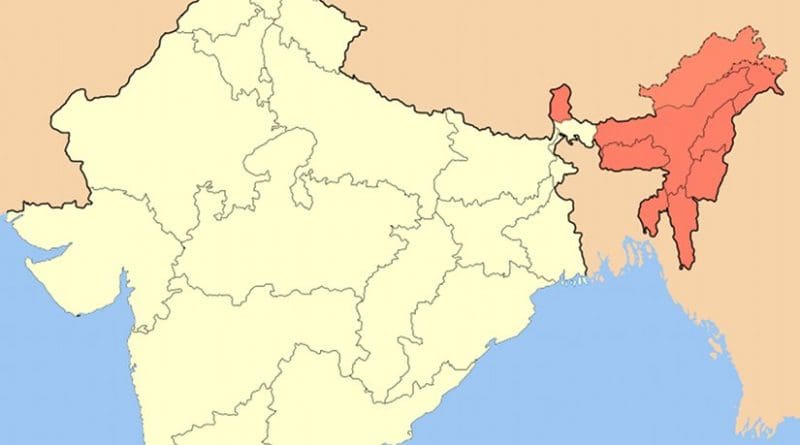Nature Of N-E Conflict Changes, But New Delhi Strategy Doesn’t – Analysis
On November 25, at least two press releases reached the media houses in the Northeast. The first one from the anti-talk Paresh Baruah faction of the ULFA criticised the divisive policies of New Delhi of creating autonomous councils in Assam under the Sixth schedule of the Constitution. The second one from the breakaway faction of the ANVC in Meghalaya warning the politicians in the state not to underestimate the outfit. These releases sum up the new conflict eco system in the Northeast, where insurgent violence has waned, yet peace remains a distant dream.
For the past couple of years, New Delhi has underlined the improvement in Northeast’s security situation—its claims buttressed by the declining figures in insurgency-related violence since 2010. Corresponding with the installation of the Awami League government in Dhaka and its decision to hound up and hand over several top insurgent leaders to India, insurgent activities in the region has waned. As many as 6,698 insurgents surrendered between 2005 and 2011, leaving many of the major outfits drastically short of cadres. Over a dozen insurgent outfits are on ‘suspension of operations’ mode with the government. Over ground pro-talk insurgent leaders decry violence and ask their former colleagues to join their ranks. The Naga insurgency is reportedly the closest to a solution in its entire history of six decades.
In spite of this, it appears the opportunity to establish durable peace in the region has been wasted. The phase of the decline in insurgent activities, mostly a gift from Dhaka and certainly not the product of the decades-long counter-insurgency operations of the army, paramilitary and the police combine, has passed. New Delhi continues to wait and watch, while the nature of conflict in the Northeast has transformed.
Firstly, while the narratives on insurgency woven around the activities of the bigger outfits have lost much their relevance, in the absence of a strategy to deal with the evolving scenario, the vacuum has been filled in by smaller outfits—breakaway factions of the old outfits as well as new entities. Secondly, the tactic of insurgency has changed from one that aims to destabilise the existence of the state to one that benefits from its continuation. As a result, while killings have diminished, incidents of extortion has picked up. Thirdly, while the threat to India’s territorial integrity has been diluted to a large extent as a result of the decline in the larger outfits, the smaller and new outfits remain potential contact as well as collaboration points for the external forces.
Following are examples of the continuation of chaos in the region even after Dhaka’s cooperation. On November 24, the ANVC-B carried out an attack on the Deputy Chief Minister of Meghalaya. Deborah C Marak was held briefly at gun point by the militants, pleaded for mercy and probably was let off because she was a woman. Insurgents in the Northeast are known to spare women from their line of fire. Similarly, the ULFA, even with its top leader reportedly hiding along the Myanmar-China border, has continued with its extortion drive in Assam. Not only the business houses and tea gardens readily part with the protection money, recently a Congress minister admitted to having paid extortion to the outfit. The erstwhile Bodo insurgency has remained the source of some of the recent riots in Assam. Regular incidents of extortion and kidnapping are still being reported from Manipur and Nagaland. Several insurgent outfits in Manipur have formed an umbrella organisation to carry on the fire of revolution burning. The prospects of peace rekindled after the handover of senior Manipuri insurgent leader Sanayaima by Dhaka has gone awry. Even in Tripura, where few years back a potent insurgency was driven to a state of serious weakness, the remnants refuse to give up.
Where is New Delhi lacking?
Much of New Delhi’s force-centric counter-insurgency strategy has been based on two premises—the invincibility of the Indian state and the luxury of time. Very few in New Delhi’s policy circles believe that the armed insurgencies pose a credible threat to India’s territorial integrity. Similarly, policy makers are equally convinced that whereas New Delhi can procrastinate, the insurgencies must demonstrate results within a time frame, lest they go out of popular imagination. Not surprisingly, toothless counter-insurgency operations by the central forces, a chronic dependency syndrome among the state police establishments and unending, yet purposeless rounds of dialogue with the insurgent outfits in ceasefire mode are some of the products of the strategy.
Chaos is starting to fester yet again in the Northeast, while New Delhi is comfortable with emphasising the narratives of absence of violence.
This article appeared in the New Indian Express and reprinted with permission.

